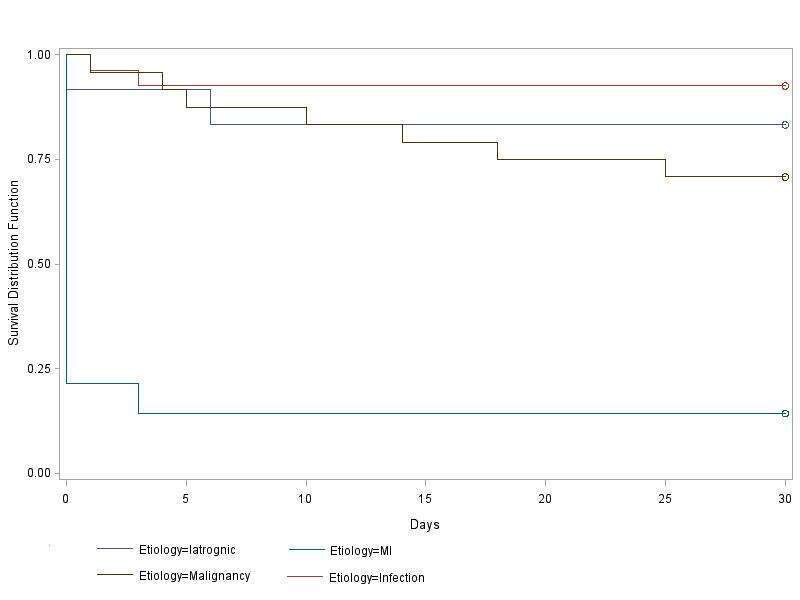Introduction
Large pericardial effusion and cardiac tamponade can cause hemodynamic instability and critical life threatening situation.
The main therapeutic approach to such case is urgent pericardiocentesis (PCN).
The outcome after PCN is related mainly to the etiology of the pericardial effusion but also to patient characteristics and the hemodynamic state that preceded.
Methods
We, retrospectively, collected from Ha`Emek Medical Center electronic file system, data on patients that underwent PCN in our facility.
Results
Since 1999, 80 patients underwent PCN in Ha`Emek Medical Center. 29 (36%) patients suffered from either Infection or inflammation, 24 (30%) patients suffered from malignant pericardial effusion, In 15 (19%) patients pericardial effusion occurred following myocardial infarction (MI) and in 12 (15%) patients the cause was iatrogenicity.
At 30 days after PCN, 25 (31%) of the patients died. 18 (72%) of them were females. We found a significant difference between the mean age of survivors vs. patients who died (63.2±15 and 71.1±12.8 respectively, p-value 0.036)
In patients that died, both systolic and diastolic blood pressure (BP) were significantly lower at presentation compared to the surviving patients (100/70 mmHg vs. 136/80 mmHg, p value
PCN was performed emergently in 23 (92%) of fatality cases compared to 36 (65%) of survival cases (p value 0.01).
At 30 days patients with MI had significantly higher mortality compared to the other etiologies [(80% vs. 20%, p<0.01), see figure].
Patients who died had lower amount of pericardial effusion drained compared to survivors (717±630 cc vs. 1378±1032 cc, p<0.01).
Conclusions
Following PCN, older age, lower BP, PCN performed emergently and MI are negative prognostic factors for 30-day mortality while larger effusion is a positive factor.


